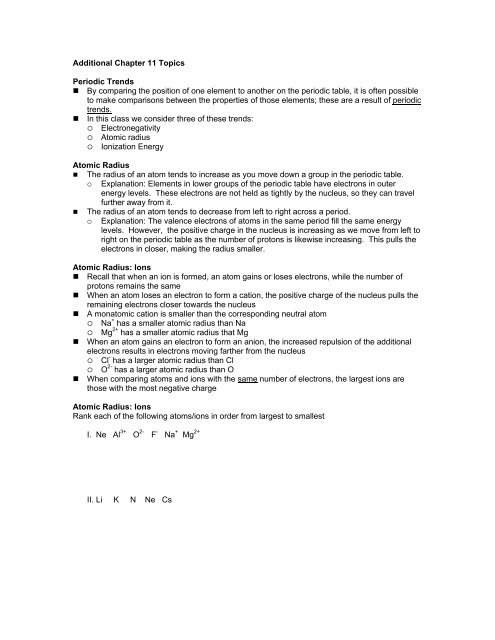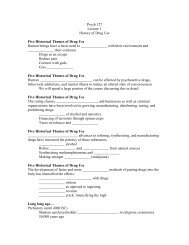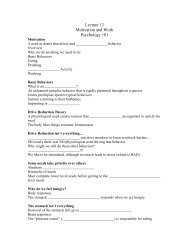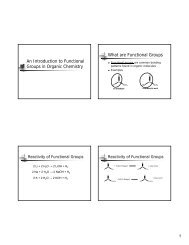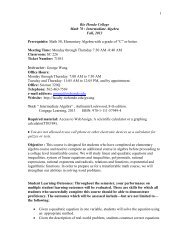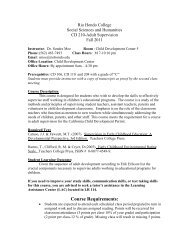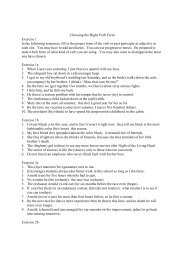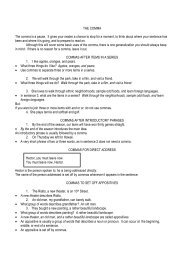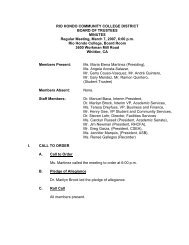You also want an ePaper? Increase the reach of your titles
YUMPU automatically turns print PDFs into web optimized ePapers that Google loves.
Additional Chapter 11 Topics<br />
Periodic Trends<br />
• By comparing the position of one element to another on the periodic table, it is often possible<br />
to make comparisons between the properties of those elements; these are a result of periodic<br />
trends.<br />
• In this class we consider three of these trends:<br />
◦ Electronegativity<br />
◦ Atomic radius<br />
◦ Ionization Energy<br />
Atomic Radius<br />
• The radius of an atom tends to increase as you move down a group in the periodic table.<br />
◦ Explanation: Elements in lower groups of the periodic table have electrons in outer<br />
energy levels. These electrons are not held as tightly by the nucleus, so they can travel<br />
further away from it.<br />
• The radius of an atom tends to decrease from left to right across a period.<br />
◦ Explanation: The valence electrons of atoms in the same period fill the same energy<br />
levels. However, the positive charge in the nucleus is increasing as we move from left to<br />
right on the periodic table as the number of protons is likewise increasing. This pulls the<br />
electrons in closer, making the radius smaller.<br />
Atomic Radius: Ions<br />
• Recall that when an ion is formed, an atom gains or loses electrons, while the number of<br />
protons remains the same<br />
• When an atom loses an electron to form a cation, the positive charge of the nucleus pulls the<br />
remaining electrons closer towards the nucleus<br />
• A monatomic cation is smaller than the corresponding neutral atom<br />
◦ Na + has a smaller atomic radius than Na<br />
◦ Mg 2+ has a smaller atomic radius that Mg<br />
• When an atom gains an electron to form an anion, the increased repulsion of the additional<br />
electrons results in electrons moving farther from the nucleus<br />
◦ Cl - has a larger atomic radius than Cl<br />
◦ O 2- has a larger atomic radius than O<br />
• When comparing atoms and ions with the same number of electrons, the largest ions are<br />
those with the most negative charge<br />
Atomic Radius: Ions<br />
Rank each of the following atoms/ions in order from largest to smallest<br />
I. Ne Al 3+ O 2- F - Na + Mg 2+<br />
II. Li K N Ne Cs


